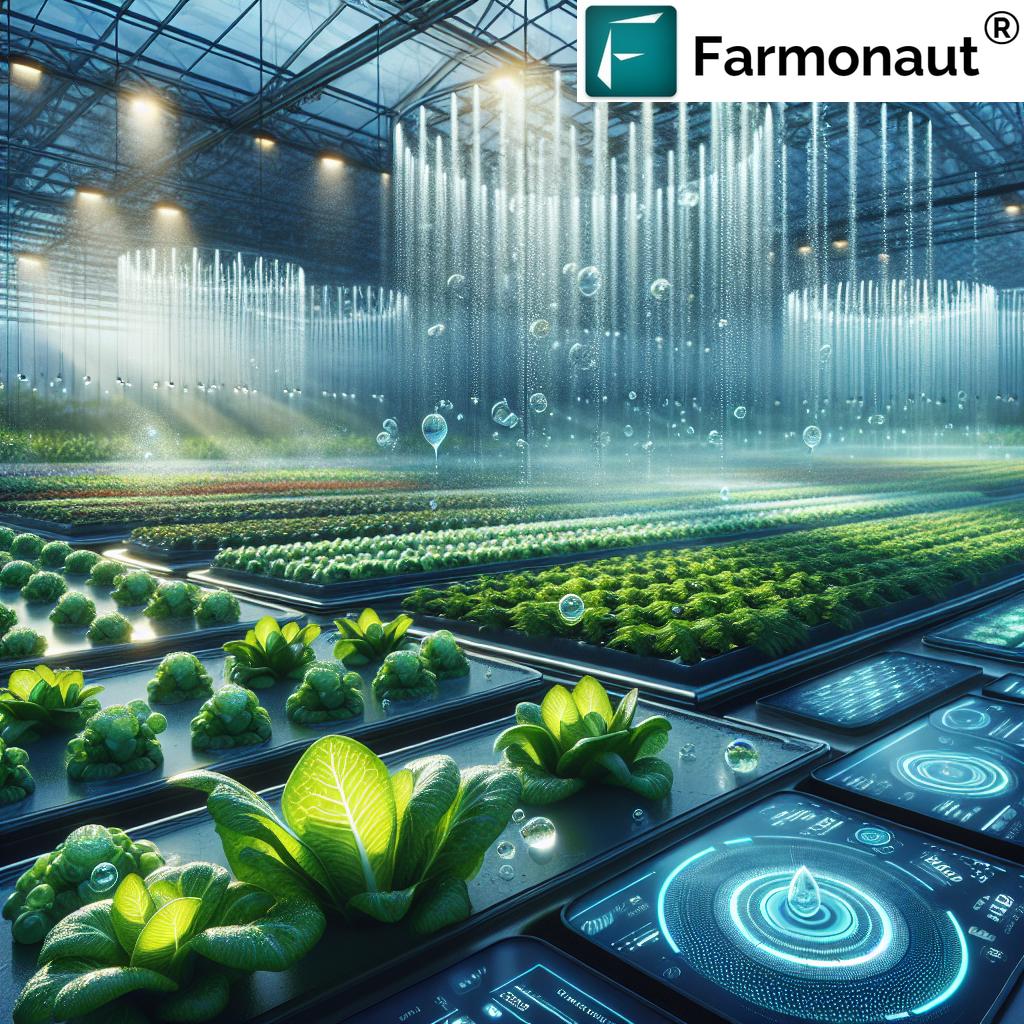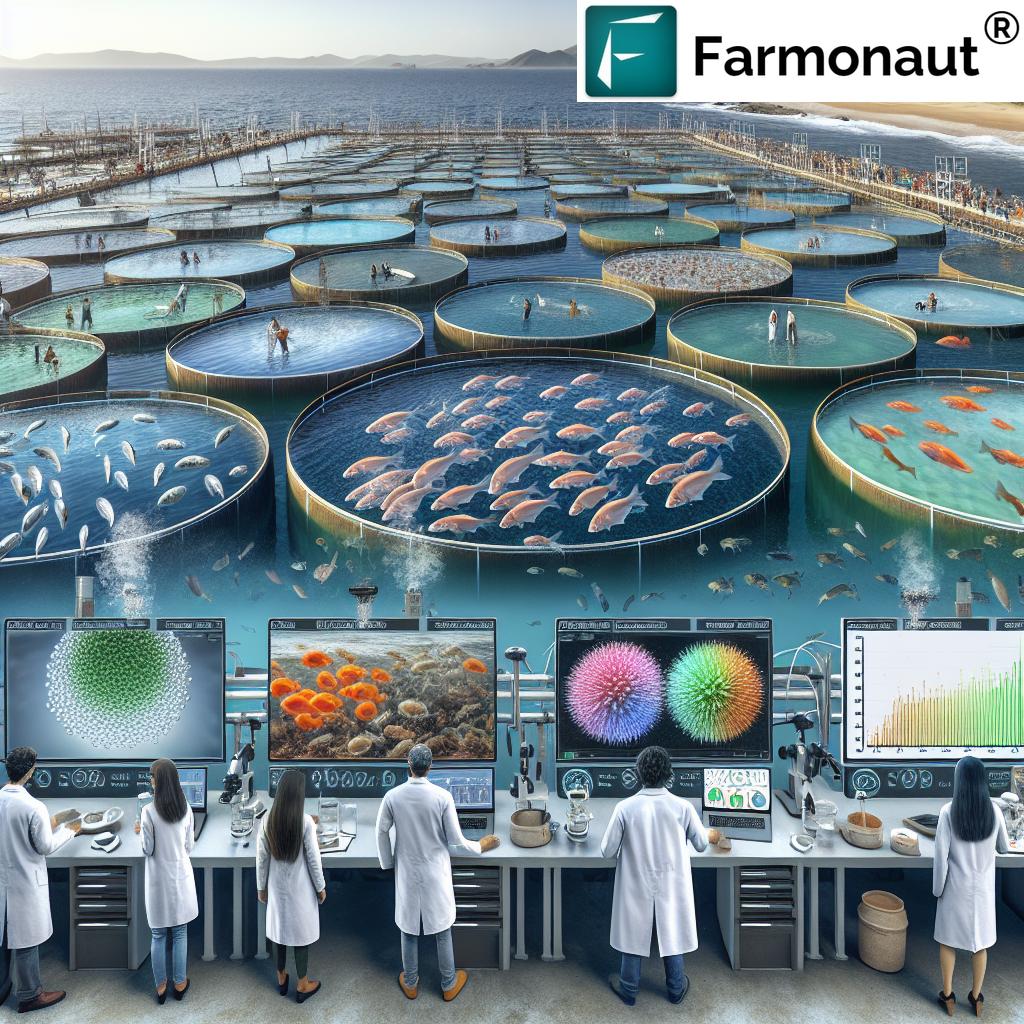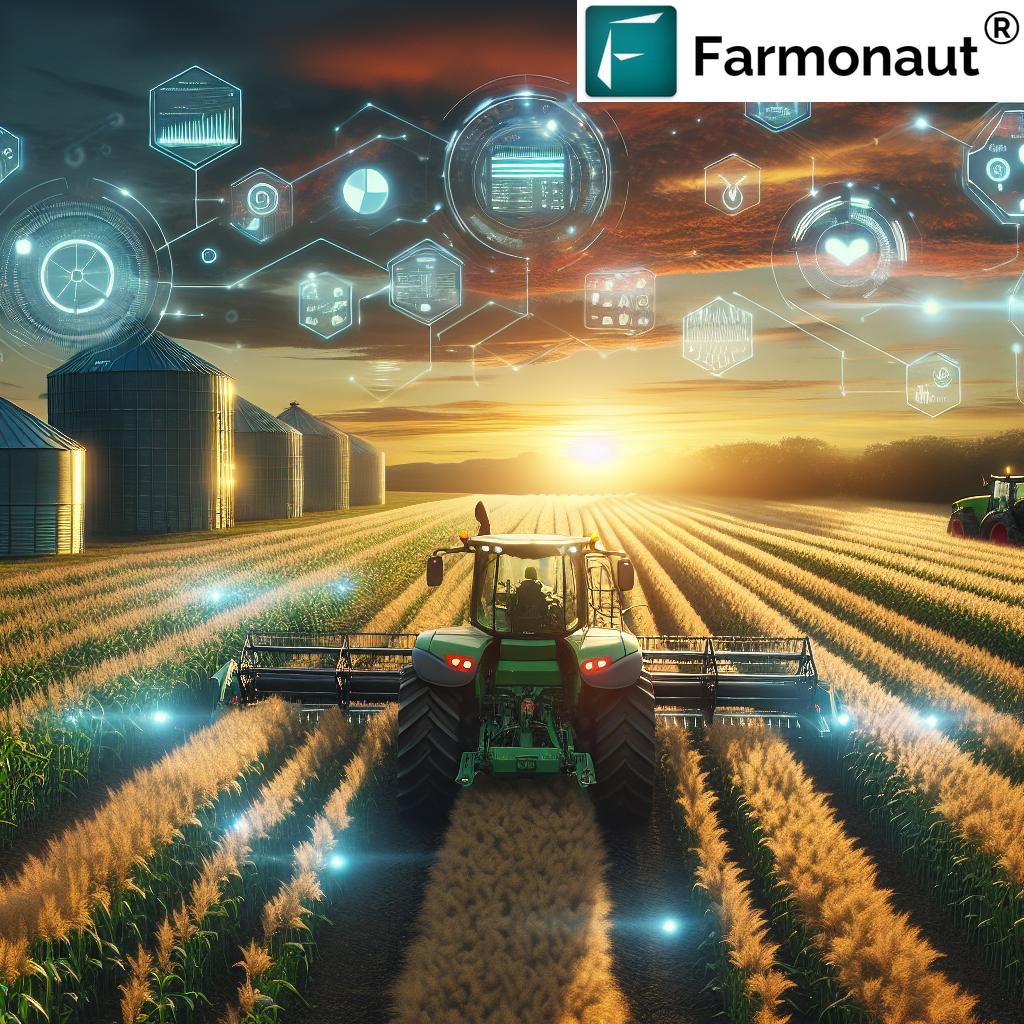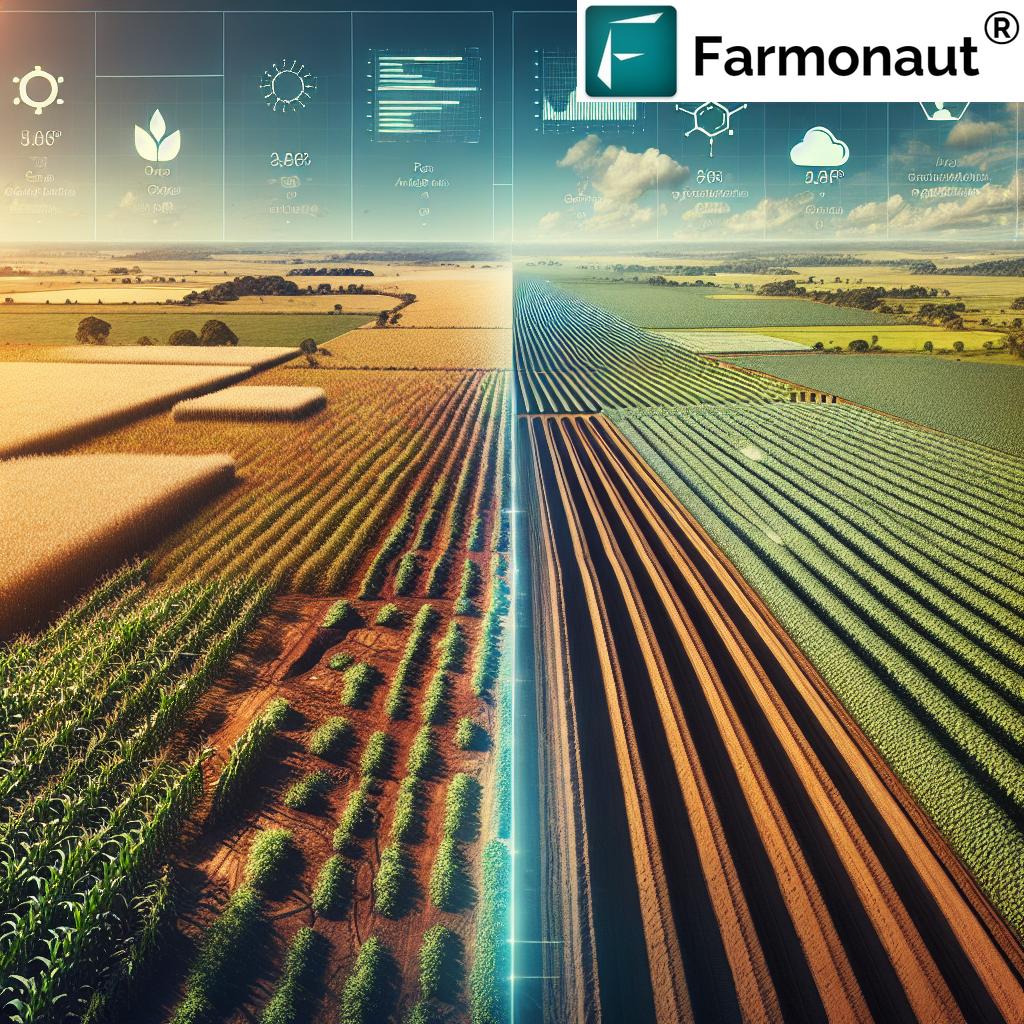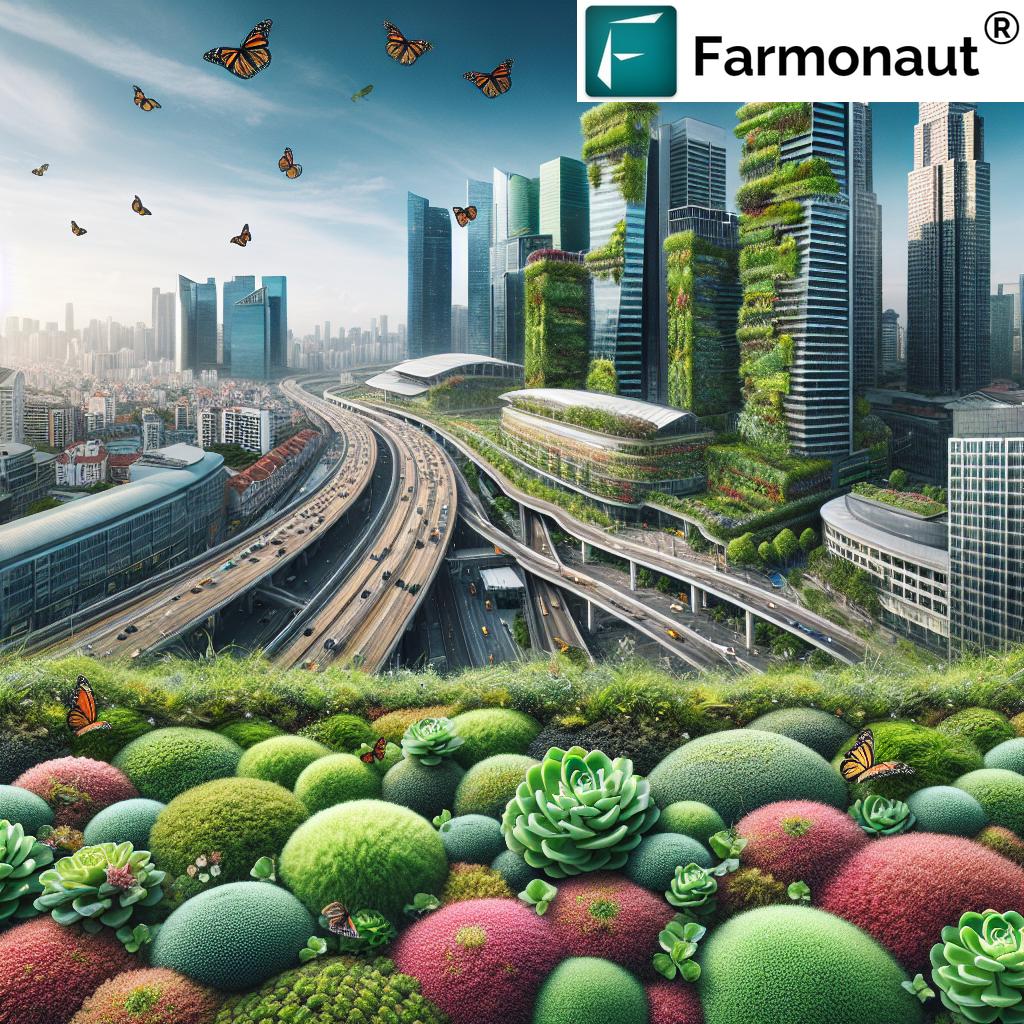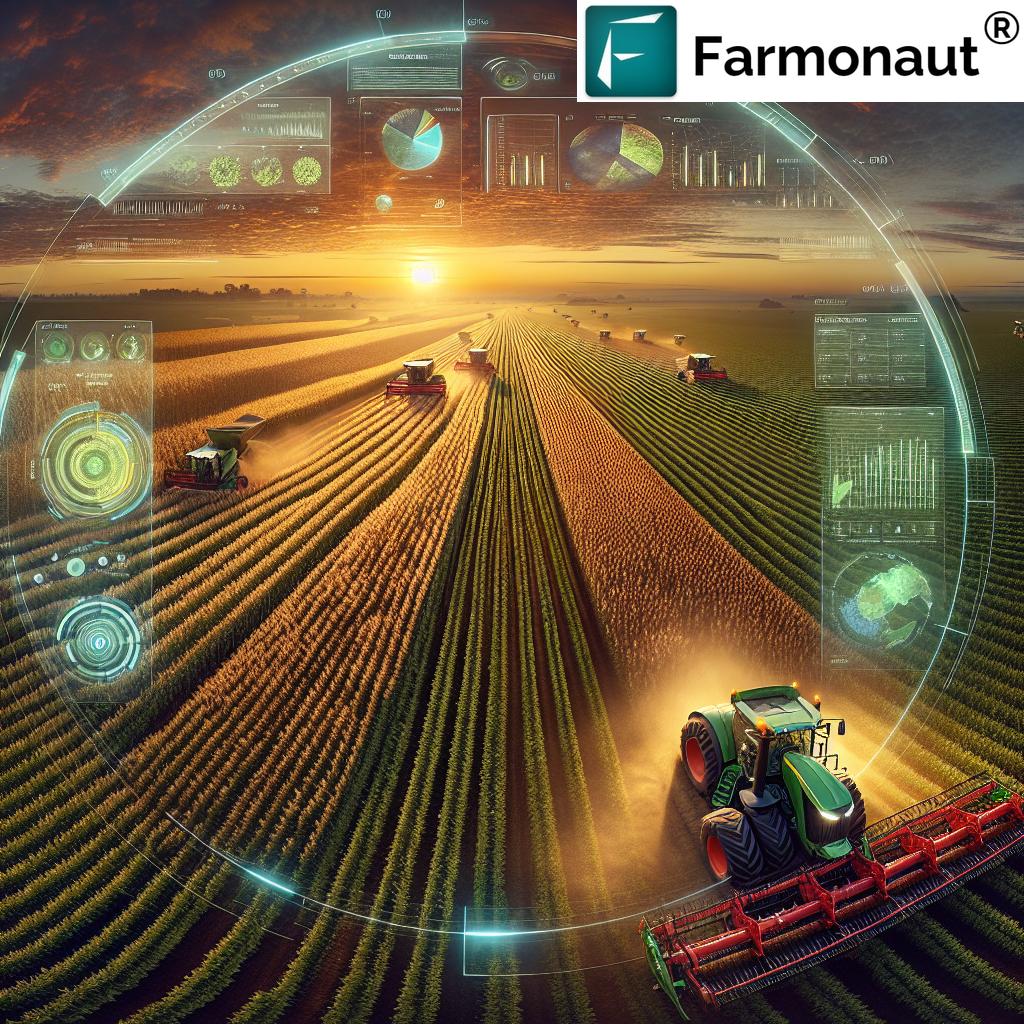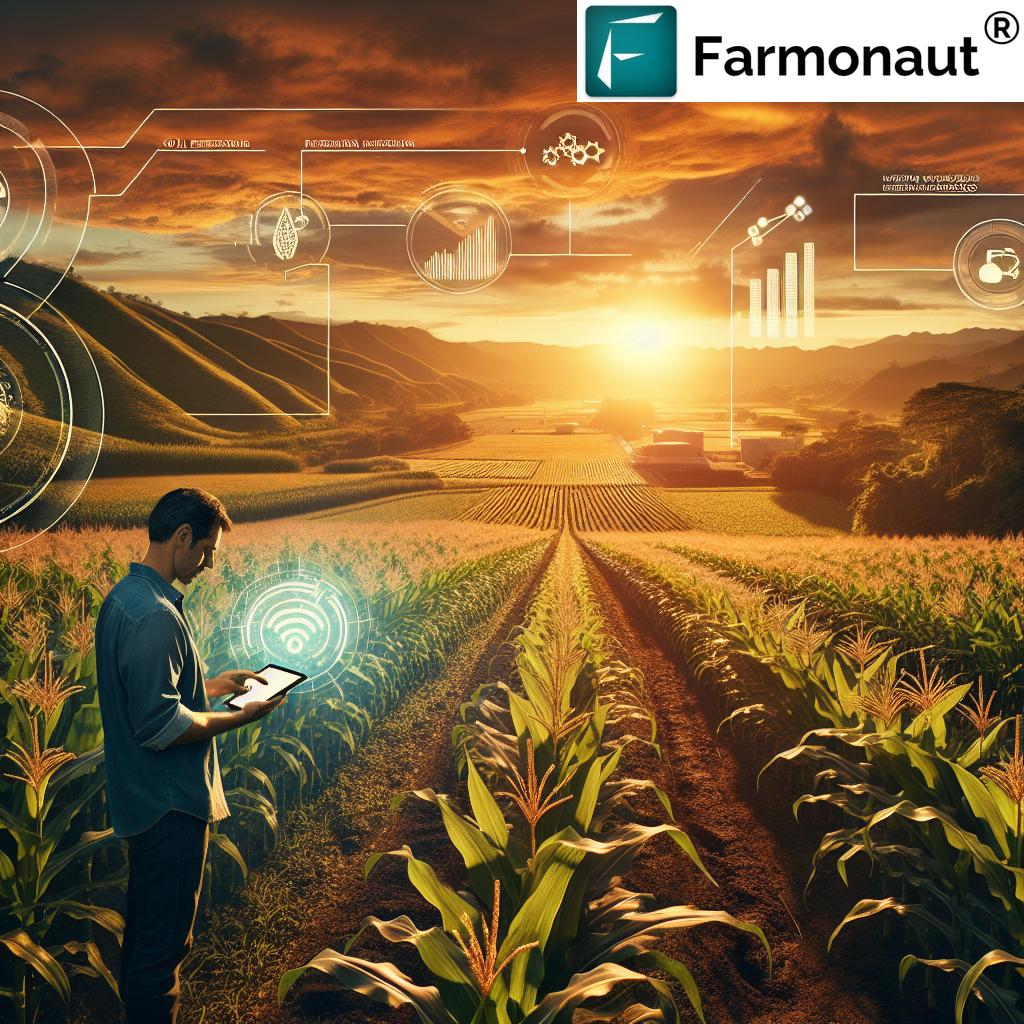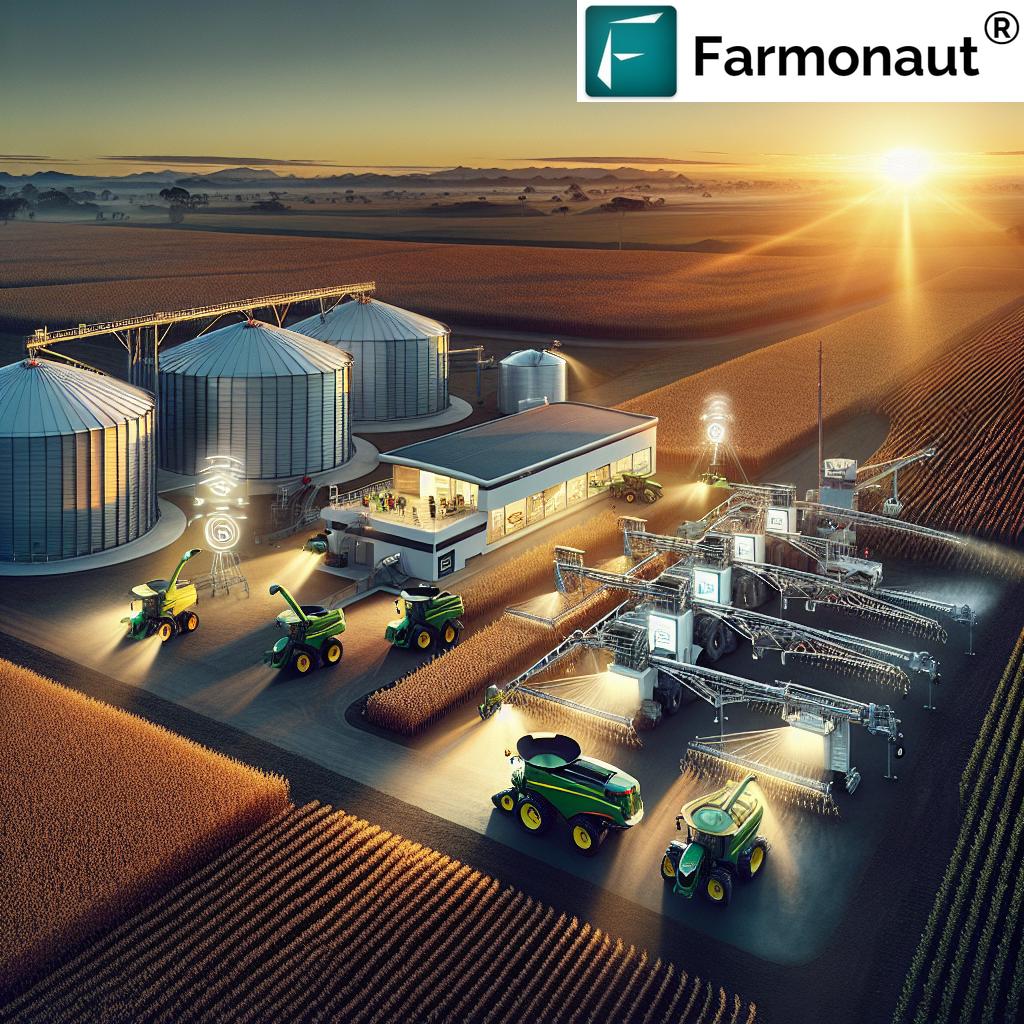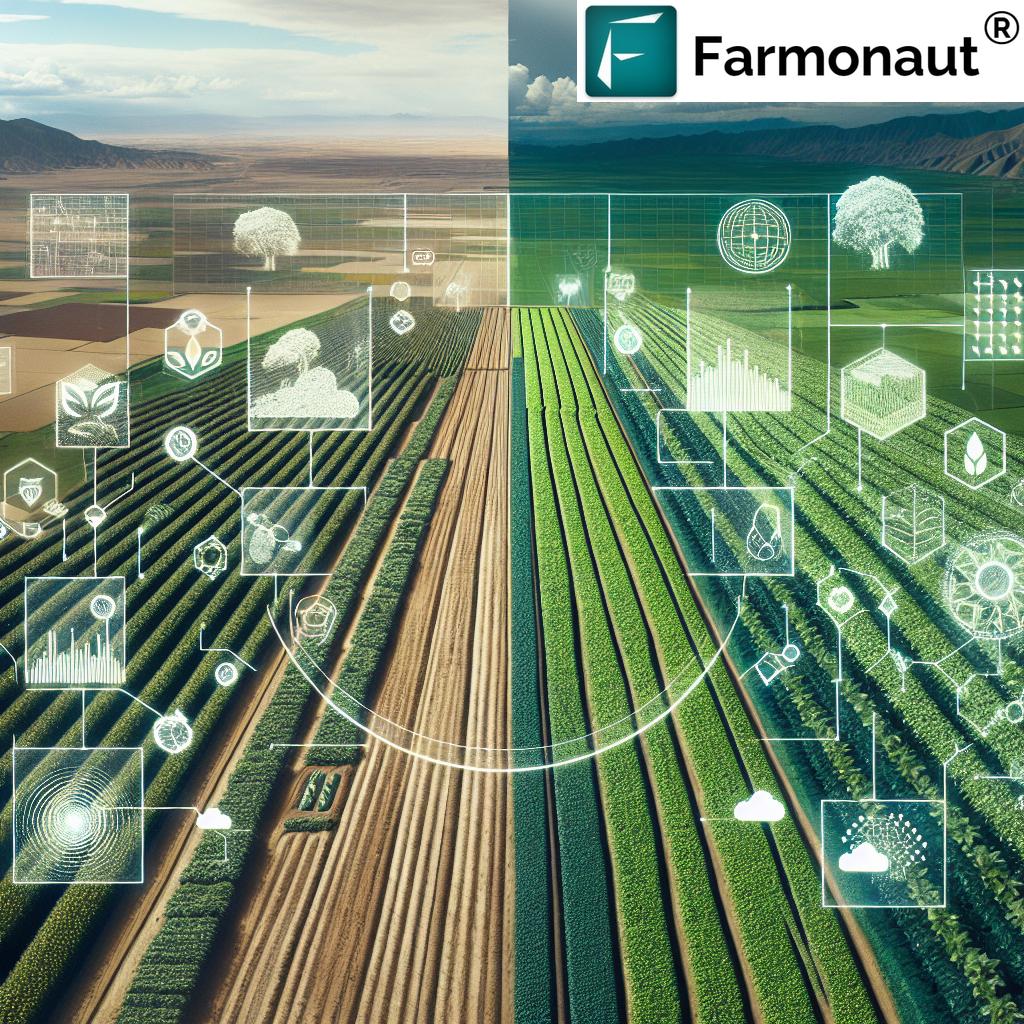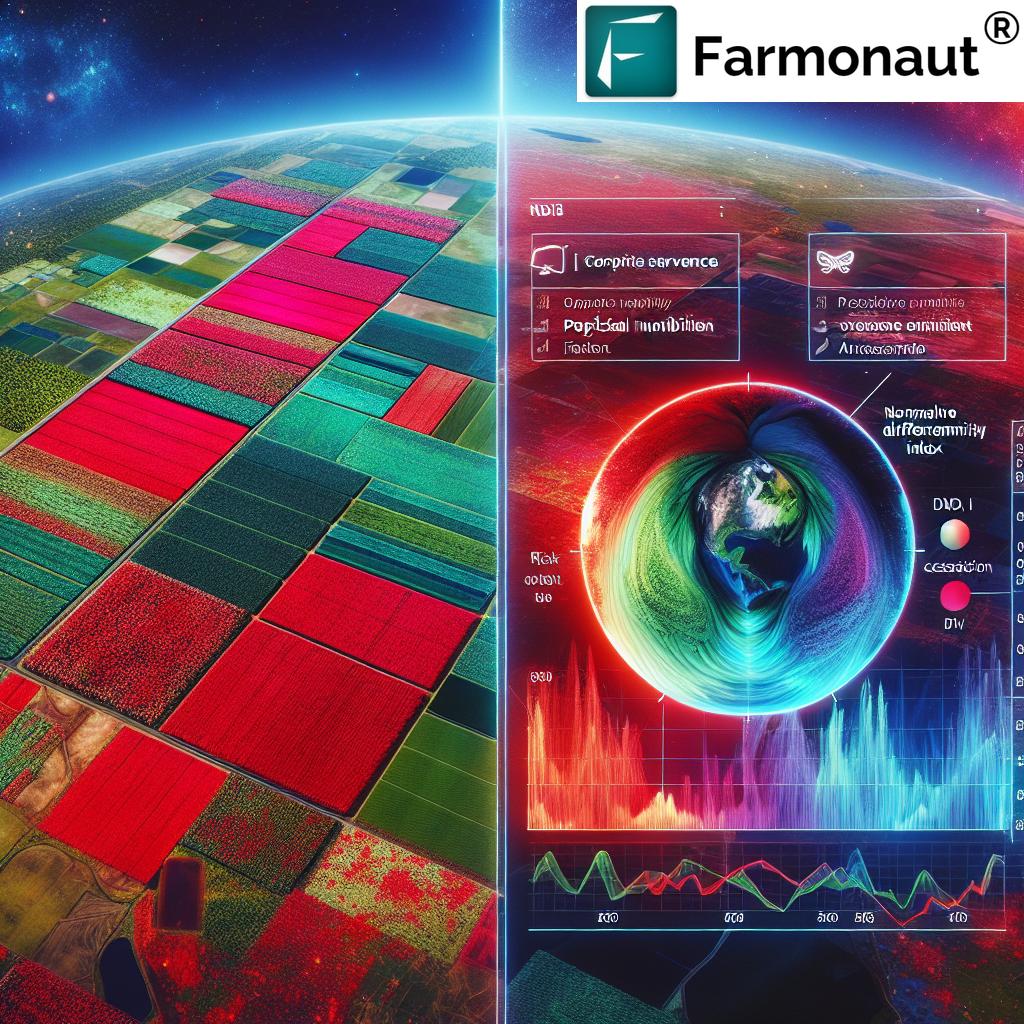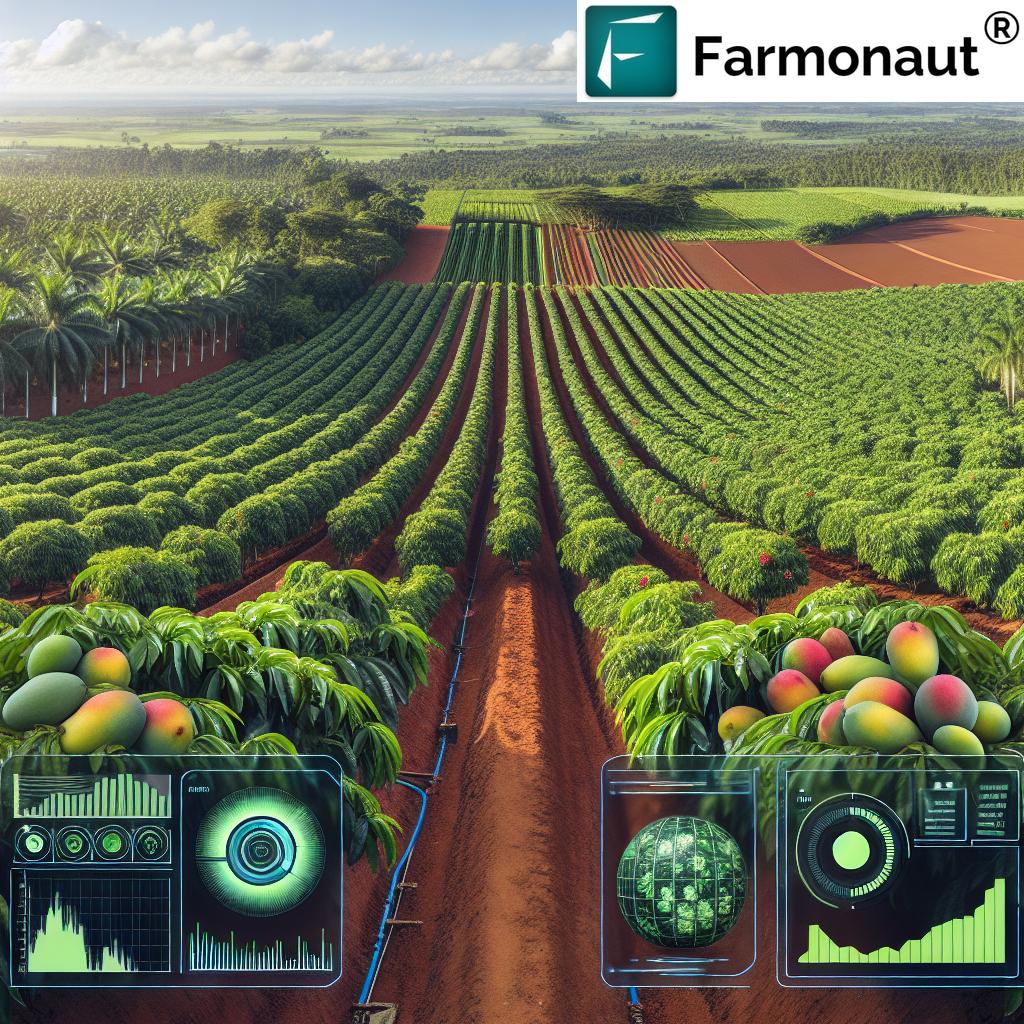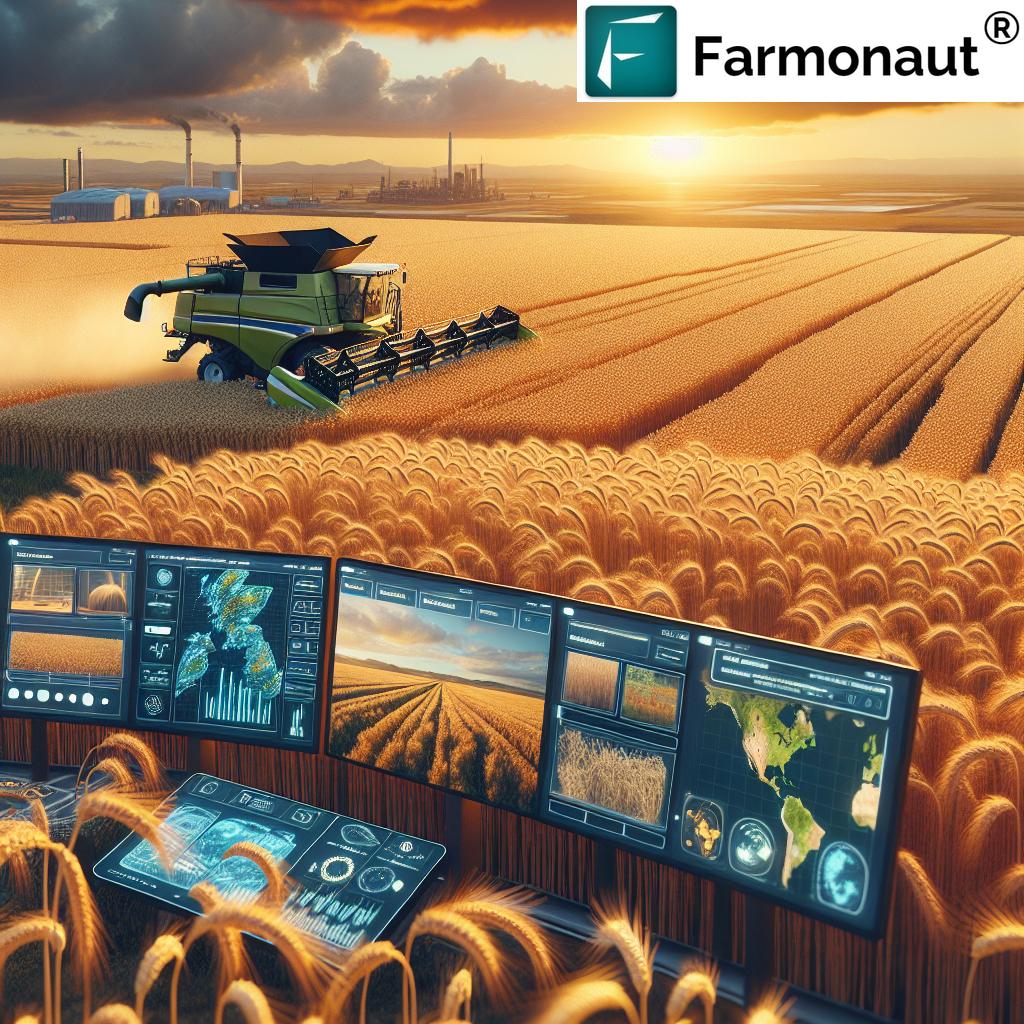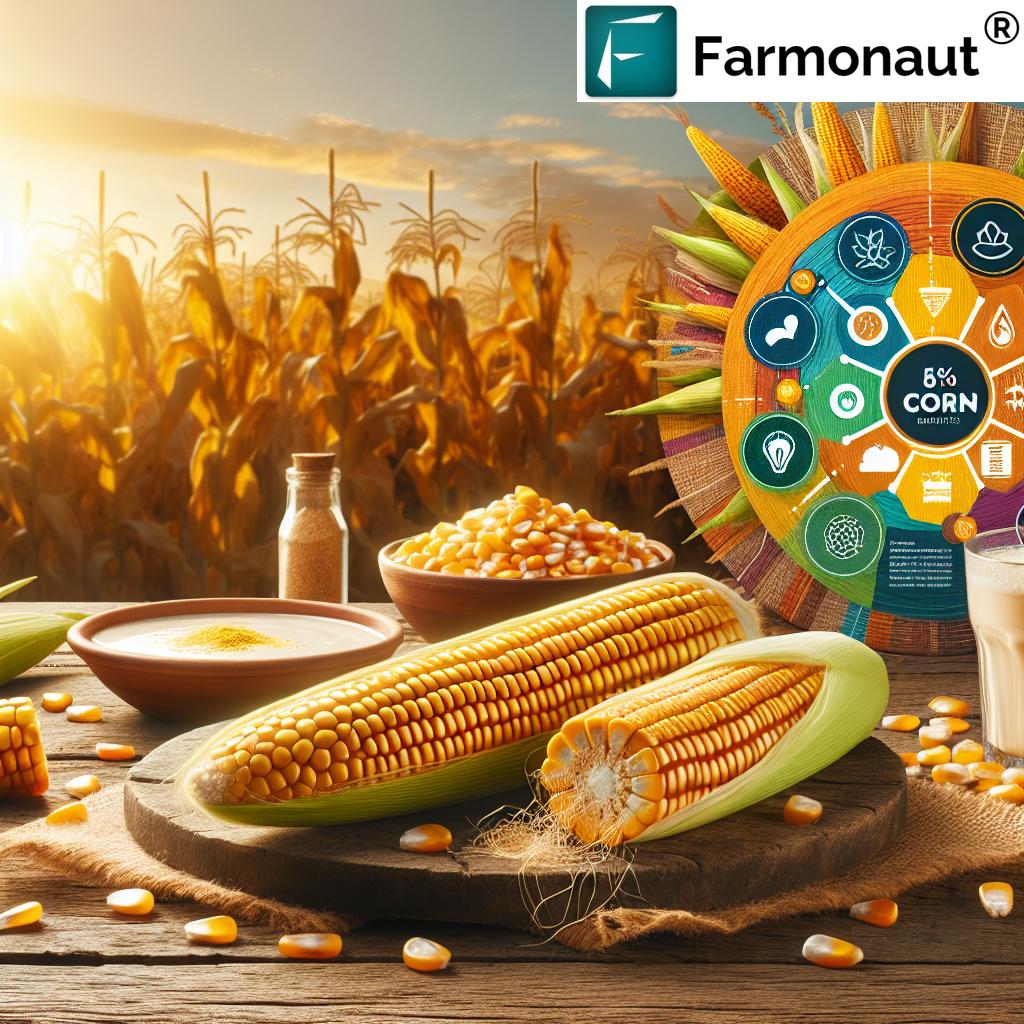Revolutionizing Agriculture: How Nanobubble Technology is Transforming Sustainable Farming in South America
“The bubble generator market is projected to grow from $1.3 billion to $1.8 billion by 2029.”
In the ever-evolving landscape of agriculture, we at Farmonaut are witnessing a revolutionary transformation taking place across South America. The catalyst for this change? Nanobubble technology. This innovative approach is reshaping sustainable farming practices and propelling the agricultural sector into a new era of efficiency and environmental stewardship.
As we delve into the world of nanobubbles and their applications in agriculture, we’ll explore how this cutting-edge technology is addressing some of the most pressing challenges facing farmers today. From precision irrigation systems to sustainable aquaculture solutions, nanobubble generators are proving to be a game-changer in the quest for more sustainable and productive farming methods.
Understanding Nanobubble Technology
Before we dive deeper into the applications of nanobubble technology in agriculture, let’s first understand what nanobubbles are and how they work.
- Definition: Nanobubbles are microscopic gas-filled cavities in liquids, typically ranging from 50 to 200 nanometers in diameter.
- Properties: Due to their small size, nanobubbles have unique properties that set them apart from larger bubbles:
- Increased surface area to volume ratio
- Enhanced gas solubility in liquids
- Extended stability and longevity in solution
- Ability to generate mild oxidative species
- Generation: Nanobubbles are created using specialized bubble generators that employ various techniques such as hydrodynamic cavitation, ultrasonic cavitation, or pressure dissolution methods.
These remarkable properties make nanobubbles ideal for a wide range of applications, particularly in agriculture and aquaculture where water and gas management play crucial roles.
The Rise of Bubble Generator Technology in South America
The bubble generator market is experiencing significant growth globally, with a particular focus on South America. This region is emerging as a hotbed for nanobubble technology adoption, driven by several factors:
- Increasing awareness of sustainable farming practices
- Growing demand for improved water management solutions
- Government initiatives supporting agricultural innovation
- Rising need for enhanced crop yields to meet food security challenges
As we look at the forecast for the bubble generator market, the numbers are impressive. The industry is projected to grow from USD 1.3 billion in 2024 to USD 1.8 billion by 2029, with a compound annual growth rate (CAGR) of 6.8%. This growth is largely attributed to the diverse applications of nanobubble technology across various sectors, with agriculture and aquaculture leading the charge.
Nanobubble Applications in South American Agriculture
Let’s explore some of the key applications of nanobubble technology that are transforming agriculture in South America:
1. Precision Irrigation Systems
Nanobubble technology is revolutionizing irrigation practices by enhancing water efficiency and nutrient delivery. Here’s how:
- Improved Water Absorption: Nanobubbles increase the dissolved oxygen content in water, promoting better root respiration and nutrient uptake.
- Enhanced Nutrient Distribution: The small size of nanobubbles allows for more uniform distribution of dissolved nutrients throughout the soil.
- Water Conservation: By improving water absorption and retention in the soil, nanobubble-enriched irrigation can reduce overall water consumption.
These benefits are particularly crucial in regions of South America facing water scarcity issues, helping farmers maximize crop yields while minimizing water usage.
2. Sustainable Aquaculture Solutions
The aquaculture industry in South America is embracing nanobubble technology to improve fish farming practices:
- Increased Dissolved Oxygen: Nanobubbles can maintain higher levels of dissolved oxygen in water, crucial for fish health and growth.
- Reduced Chemical Usage: The oxidative properties of nanobubbles can help control harmful bacteria and parasites, reducing the need for chemical treatments.
- Improved Water Quality: Nanobubbles aid in the breakdown of organic waste, leading to cleaner water and healthier aquatic environments.
These advancements are enabling South American aquaculture operations to increase production while adhering to stricter environmental regulations.
3. Crop Production Enhancement Techniques
Nanobubble technology is being applied to various aspects of crop production:
- Seed Treatment: Nanobubble-treated water can improve seed germination rates and early seedling growth.
- Foliar Spraying: Nanobubbles can enhance the effectiveness of foliar fertilizers and pesticides by improving their absorption into plant tissues.
- Soil Remediation: The technology can help in breaking down soil contaminants and improving overall soil health.
These applications are helping South American farmers increase crop yields and quality while reducing reliance on chemical inputs.
4. Hydroponic Bubble Technology
In the realm of soilless agriculture, nanobubble technology is making significant strides:
- Oxygenation of Nutrient Solutions: Nanobubbles increase dissolved oxygen levels in hydroponic systems, promoting healthier root development.
- Nutrient Uptake Efficiency: The enhanced gas solubility properties of nanobubbles improve the availability and absorption of nutrients.
- Disease Prevention: The oxidative nature of nanobubbles helps suppress pathogenic microorganisms in hydroponic systems.
These advancements are particularly relevant in urban farming initiatives across South American cities, where space-efficient hydroponic systems are gaining popularity.
Environmental Sustainability in Agriculture
One of the most compelling aspects of nanobubble technology is its potential to significantly enhance environmental sustainability in agriculture. Here’s how:
- Reduced Chemical Usage: By improving nutrient uptake and pest control, nanobubble technology can decrease the need for chemical fertilizers and pesticides.
- Water Conservation: The improved efficiency of nanobubble-enhanced irrigation systems leads to substantial water savings.
- Energy Efficiency: Nanobubble generators are often more energy-efficient compared to traditional aeration systems, reducing the carbon footprint of agricultural operations.
- Soil Health Preservation: By promoting better root health and reducing chemical inputs, nanobubble technology contributes to long-term soil sustainability.
These environmental benefits align well with the growing emphasis on sustainable agriculture practices in South America and globally.
“Nanobubble technology applications are leading growth in sustainable agriculture and aquaculture solutions across South America.”
Innovative Water Quality Management
Nanobubble technology is revolutionizing water quality management in agriculture and aquaculture:
- Micro Bubble Water Treatment: Nanobubbles can effectively remove contaminants and improve overall water quality in agricultural reservoirs and aquaculture ponds.
- Algae Control: The oxidative properties of nanobubbles can help control algal blooms without the use of harmful chemicals.
- pH Regulation: Nanobubbles can aid in maintaining optimal pH levels in water, crucial for both plant growth and aquatic animal health.
These water quality management applications are particularly valuable in regions of South America dealing with water pollution and scarcity issues.
Energy-Efficient Farming Methods
The adoption of nanobubble technology is contributing to more energy-efficient farming practices:
- Reduced Pumping Costs: Improved water absorption in soils can lead to reduced irrigation frequency and lower pumping energy costs.
- Efficient Aeration: Nanobubble generators often require less energy compared to traditional aeration systems in aquaculture.
- Optimized Resource Use: By enhancing nutrient uptake and water use efficiency, nanobubble technology helps optimize overall resource utilization on farms.
These energy-efficient practices not only reduce operational costs for farmers but also contribute to the overall sustainability of agricultural operations in South America.
The Impact on South American Agriculture
The adoption of nanobubble technology is having a profound impact on South American agriculture:
- Increased Crop Yields: Farmers are reporting significant increases in crop yields due to improved water and nutrient management.
- Water Conservation: In water-stressed regions, nanobubble technology is helping conserve precious water resources.
- Reduced Environmental Impact: The decrease in chemical inputs is leading to more environmentally friendly farming practices.
- Economic Growth: The improved efficiency and productivity are contributing to economic growth in the agricultural sector.
These impacts are positioning South America as a leader in innovative and sustainable agricultural practices.
| Application Area | Benefits | Estimated Adoption Rate (%) | Projected Impact by 2029 |
|---|---|---|---|
| Precision Irrigation | Improved water efficiency, enhanced nutrient delivery | 15-20% | 25% reduction in water usage, 15% increase in crop yields |
| Aquaculture | Better water quality, increased fish health | 10-15% | 30% increase in fish production, 20% reduction in disease occurrence |
| Hydroponic Systems | Enhanced nutrient uptake, improved root health | 5-10% | 20% increase in plant growth rate, 15% reduction in nutrient costs |
| Water Treatment | Reduced chemical usage, improved water quality | 20-25% | 40% reduction in chemical treatments, 30% improvement in water clarity |
Challenges and Future Outlook
While the potential of nanobubble technology in South American agriculture is immense, there are challenges to overcome:
- Initial Investment Costs: The upfront costs of implementing nanobubble technology can be a barrier for some farmers.
- Education and Training: Proper training is needed to ensure optimal use of the technology.
- Regulatory Frameworks: Developing appropriate regulations for this new technology is an ongoing process.
Despite these challenges, the future outlook for nanobubble technology in South American agriculture is bright. As research continues and adoption rates increase, we expect to see:
- Further improvements in nanobubble generator efficiency and affordability
- Expanded applications across different crop types and farming systems
- Integration with other emerging technologies like AI and IoT for smart farming solutions
The Role of Farmonaut in the Agricultural Revolution
As we at Farmonaut observe these exciting developments in nanobubble technology, we’re committed to supporting farmers in South America and beyond in adopting innovative, sustainable practices. Our satellite-based farm management solutions complement these new technologies by providing valuable insights for precision agriculture.
Through our advanced satellite imagery analysis and AI-driven advisory systems, we help farmers make informed decisions about resource management, crop health, and environmental sustainability. While we don’t directly manufacture or sell nanobubble technology, our platform can help farmers optimize its use by providing detailed, real-time data on crop health, soil moisture levels, and other critical agricultural metrics.
For those interested in leveraging satellite technology alongside innovations like nanobubbles, we invite you to explore our services:
For developers looking to integrate our satellite and weather data into their own systems, check out our API and API Developer Docs.
Our mobile apps are also available for on-the-go farm management:
Conclusion
The adoption of nanobubble technology in South American agriculture represents a significant leap forward in sustainable farming practices. From precision irrigation to aquaculture, this innovative technology is addressing key challenges in water management, crop production, and environmental sustainability.
As the bubble generator market continues to grow, we anticipate even more exciting developments in the field. The projected expansion from $1.3 billion to $1.8 billion by 2029 underscores the increasing recognition of nanobubbles’ unique properties and their potential to transform various industries, particularly agriculture.
At Farmonaut, we’re excited to be part of this agricultural revolution, providing farmers with the tools and insights they need to make the most of these emerging technologies. By combining satellite-based farm management with innovations like nanobubble technology, we’re working towards a future of more efficient, productive, and sustainable agriculture in South America and beyond.
FAQs
- What are nanobubbles and how do they benefit agriculture?
Nanobubbles are microscopic gas-filled cavities in liquids, typically 50-200 nanometers in diameter. They benefit agriculture by improving water efficiency, enhancing nutrient delivery, and promoting better plant growth. - How does nanobubble technology improve water quality in aquaculture?
Nanobubbles increase dissolved oxygen levels in water, help break down organic waste, and can control harmful bacteria, leading to improved water quality and healthier aquatic environments. - What is the projected growth of the bubble generator market?
The bubble generator market is expected to grow from USD 1.3 billion in 2024 to USD 1.8 billion by 2029, with a CAGR of 6.8%. - How does nanobubble technology contribute to sustainable farming?
Nanobubble technology reduces water and chemical usage, improves energy efficiency, and enhances overall crop productivity, all contributing to more sustainable farming practices. - What are some challenges in adopting nanobubble technology in agriculture?
Challenges include initial investment costs, the need for farmer education and training, and developing appropriate regulatory frameworks for this new technology.
